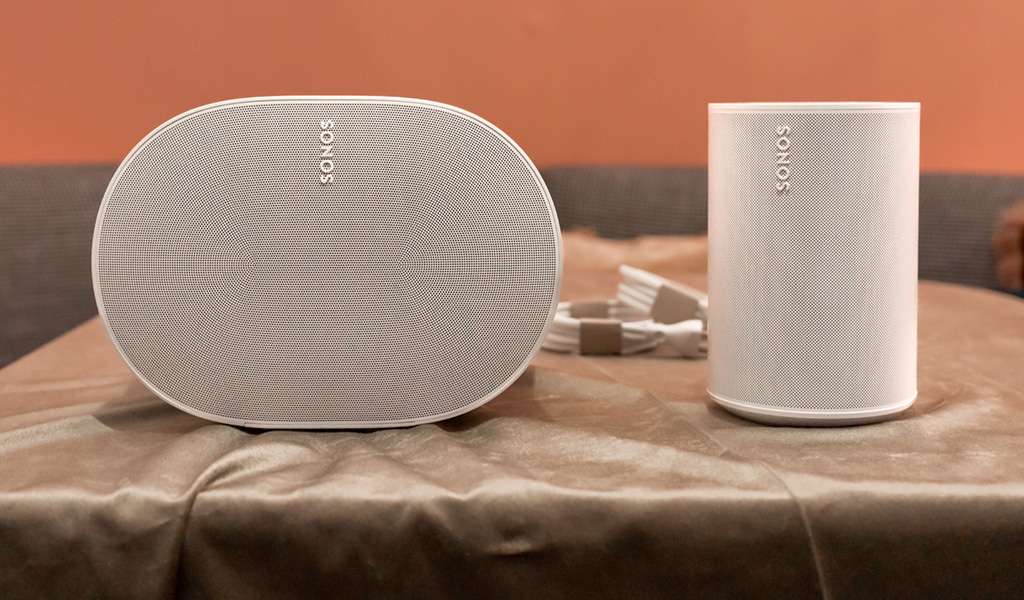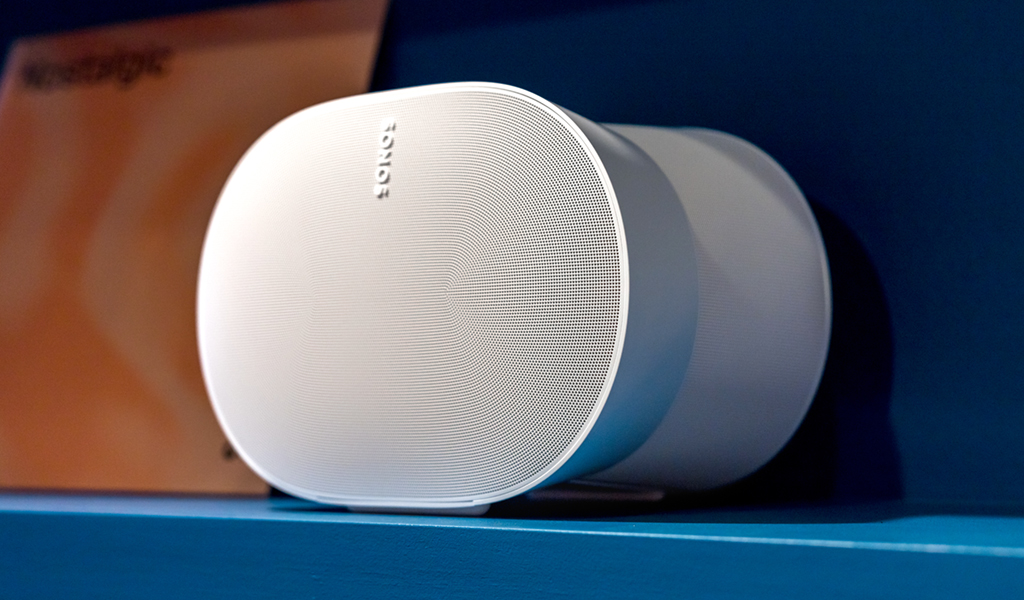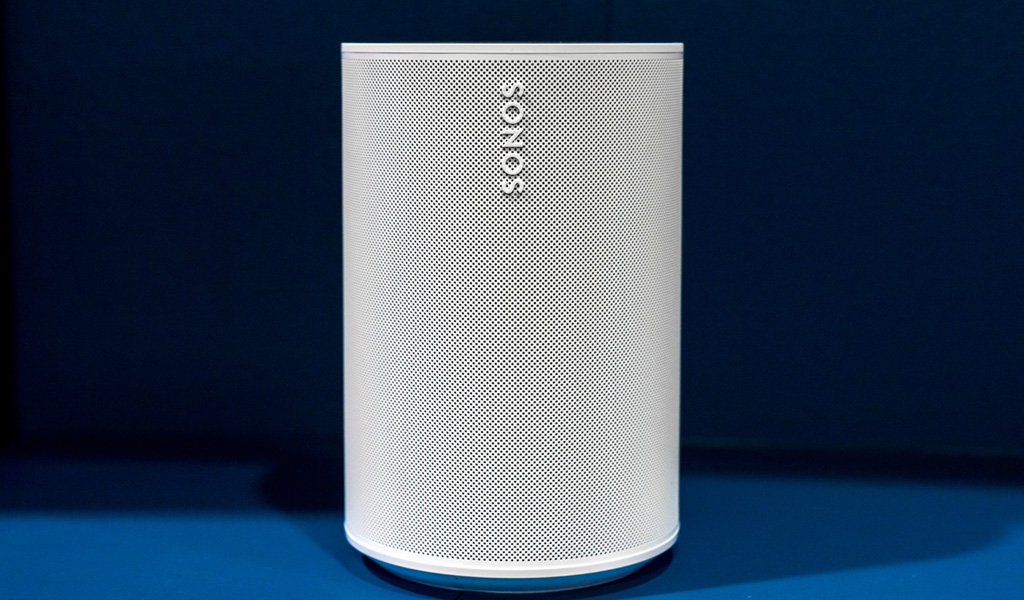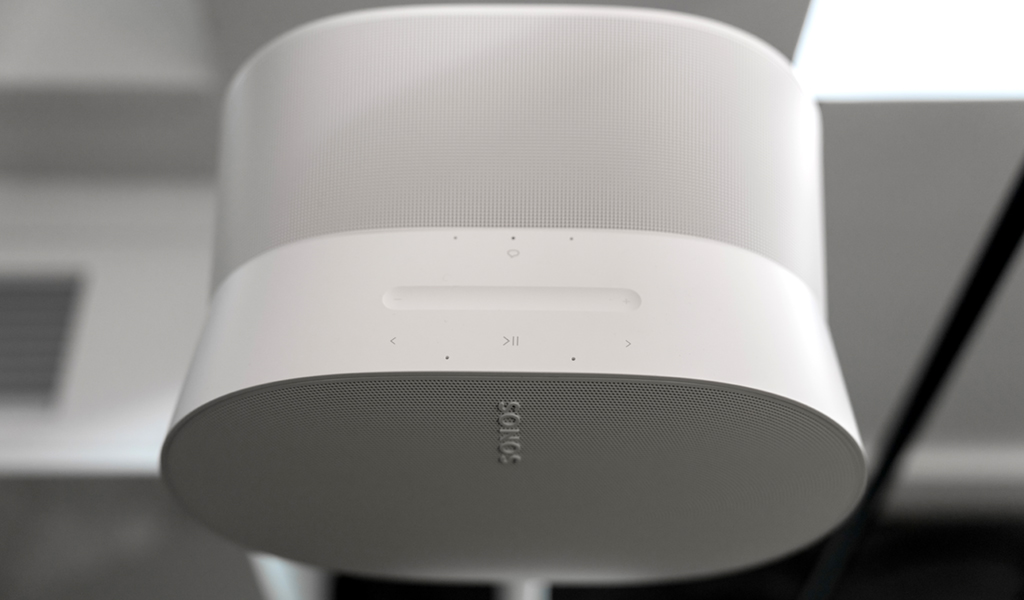
Sonos officially unveiled its two newest smart speakers in the Era 300 and Era 100, with spatial audio being one of the key new features available. Both speakers have new looks, with the Era 300 an entirely new design that brings all Sonos has to offer, albeit with re-engineered components inside to deliver beefier audio.
Spatial audio isn’t new to Sonos, as the Arc soundbar has upward-firing drivers to simulate a surround sound effect when playing audio on its own. Both of these speakers aim to perform the same effect, only with different expectations, given their relative sizes.
These are music speakers, above all else, not necessarily speakers to hook up to a TV. You can utilize them in broader surround-sound setups, which I’ll explain further down.
Looking at the Era 300

The most striking part of the Era 300 is the concave design from a side profile. From the front, it gives a slight impression that the speaker is sort of ‘bursting’ out of the middle. It just doesn’t look like any other particular Sonos speaker and the biggest reason is because of the way it’s supposed to distribute sound.
The spatial audio setup inside is pretty extensive, made up of a combination of six drivers. Tweeters face forward, left, right and up to deliver a surround-sound audio effect whenever you play Dolby Atmos content. The newer woofers give the bass a nice depth that will make itself noticeable. As with any Sonos speaker, you can tinker with how the Era 300 sounds through the app’s equalizer settings.
The Dolby Atmos element is important here because it’s the only way you will get the spatial audio effect. Basically, with the drivers firing from the speaker in all those directions, your ears should hear it as if it’s enveloping the space around the room. I got to try this out myself prior to this announcement, and it is impressive for the speaker’s size. As is, Amazon Music Unlimited and Tidal HiFi are two music streaming services offering spatial audio. Apple Music also does, and it will be ready for the Era 300 when the speaker launches. That support will also extend to the Arc and Beam (Gen 2) soundbars as well.
To tune the speaker to your room, you can use Trueplay on the Sonos app like before, except for one difference. Android users can now activate the feature in a limited form where the speaker’s onboard microphones will analyze how tones bounce back to it to get an approximate measurement of the room’s acoustics. iPhone users can still do it by manually waving the phone across the walls to get a more accurate reading.
Looking at the Era 100

The Era 100 is a remastered Sonos One. That’s why it sports a similar look, albeit more cylindrical and with more going on underneath. For starters, it is a stereo speaker, rather than the mono setup in the One. It has two tweeters with a midwoofer to pump a thicker sound profile that also keeps the entire soundstage crisp. It sounded just like that when I heard demos for myself, and I expect two of them stereo-paired together would be even better.
The Era 100 won’t match the power or output of the 300, and is not a spatial audio product. It essentially replaces the One in just about every way, only with greater power and better fidelity. If you like the idea of a speaker that size, but want more sound out of it, this might be it.
You could take it further by pairing two Era 100 speakers together for separate left and right channels. That upgrades the sound significantly, as I can attest having previously done that with two ones. I use those as rear channels with a Sonos Arc for a surround sound setup that really brings out the nuances when watching movies and shows. Sonos is suggesting the same as a way to build a home theatre system.
Connections and features to consider

Along with Wi-Fi, the two speakers will also support Bluetooth streaming as well. AirPlay 2 is always there for iOS and Mac users, while top music streaming apps will connect with either speaker just fine on both iOS and Android.
If you care about voice assistants, know that Google Assistant is not included for either Era speaker. Sonos continues to support Alexa, but Google’s voice assistant will be silent from the start. It’s not clear when or if that will change, but it is clear both speakers have the hardware to support it should that change.
Both speakers don’t have Ethernet or Aux-In ports, but you can make that happen with an adapter. The USB-C port in the back acts as a pass-through when you plug in the right accessory. Sonos says it will make its own, and it may be possible to use third-party ones, though I will have to test that out when I review both speakers.
Neither speaker is portable in the sense you can unplug them and still play music. They will need to be plugged in at all times, so you would have to consider where to put them. Both of the new Era speakers will work just fine in an existing Sonos multiroom setup. You can easily move music to and from them and other speakers you already have in the ecosystem.
Coming soon
The Sonos Era 300 and Era 100 will launch on March 28 in black and white variants, and you can pre-order either speaker starting March 14th. Check out the current Sonos products also available.



